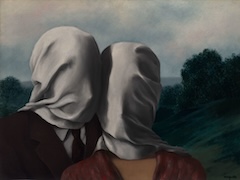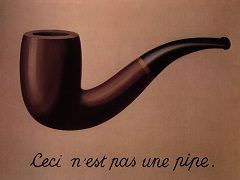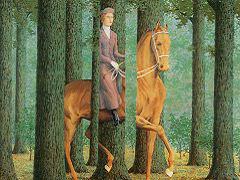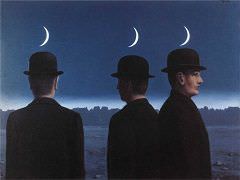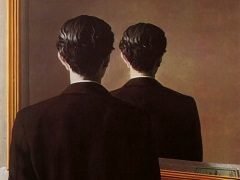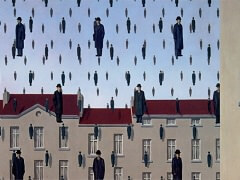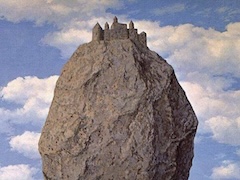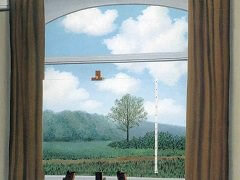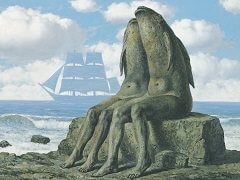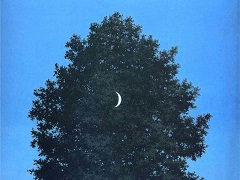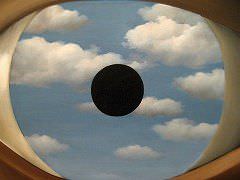The Listening Room, 1952 by Rene Magritte
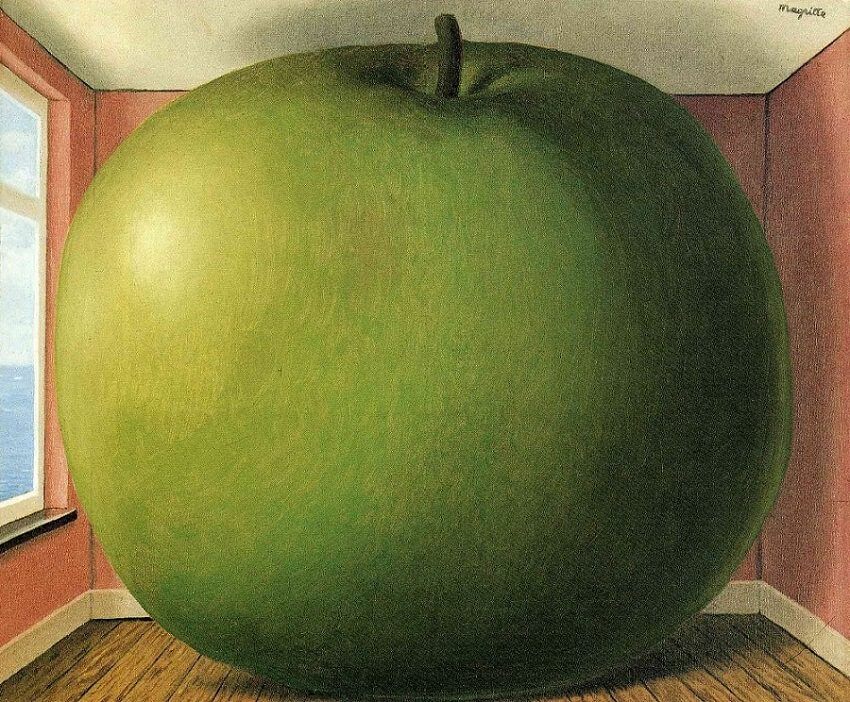
The apple is one of the most frequent and recognizable of Magritte's motifs, appearing in various guises such as a floating orb in the sky, a masked entity, and perhaps most famously hiding the face of a man wearing a bowler hat. The ambiguity of its role in the present scene invites the viewer to contemplate possible interpretations without ever offering a definitive meaning, sustaining a sense of enigma that the painter prized above all else.
For Magritte, the apple came to symbolize this perpetual tension between the hidden and visible, and he even used it to obscure his own visage in some of his self-portraits. The painter stated:
Those of my pictures that show very familiar objects, an apple, for example, pose questions. We no longer understand when we look at an apple; its mysterious quality has thus been evoked. In a recent painting, I have shown an apple in front of a person's face At least it partially hides the face. Well then, here we have the apparent visible, the apple, hiding the hidden visible, the person's face. This process occurs endlessly. Each thing we see hides another, we always want to see what is being hidden by what we see. There is an interest in what is hidden and what the visible does not show us. This interest can take the form of a fairly intense feeling, a kind of contest, I could say, between the hidden visible and apparent visible". Suzi Gablik suggests that "Magritte's paintings are a systematic attempt to disrupt any dogmatic view of the physical world. By means of the interference of conceptual paradox, he causes ordinary phenomena to inherit extraordinary and improbably conclusions. What happens in Magritte's paintings is, roughly speaking, the opposite of what the trained mind is accustomed to expect. His pictures disturb the elaborate compromise that exists between the mind and life. In Magritte's paintings, the world's haphazard state of consciousness is transformed into a single will"
Magritte's transformation of a humble apple into an impressive boulder also reflects the enduring impact of the Italian painter Giorgio de Chirico's pittura metafisica on his oeuvre. De Chirico's images such as Le Chant d'amour, 1914, which was a seminal discovery for Magritte during the early years of his career, portrays inconsequential objects such as a ball or a glove as monumental symbols with mysterious and ultimately indeterminate import. Similarly, Magritte confers the qualities associated with rocks, such as heaviness and immobility, to the apple, creating a seemingly permanent monument to what is ordinarily a highly perishable foodstuff.



